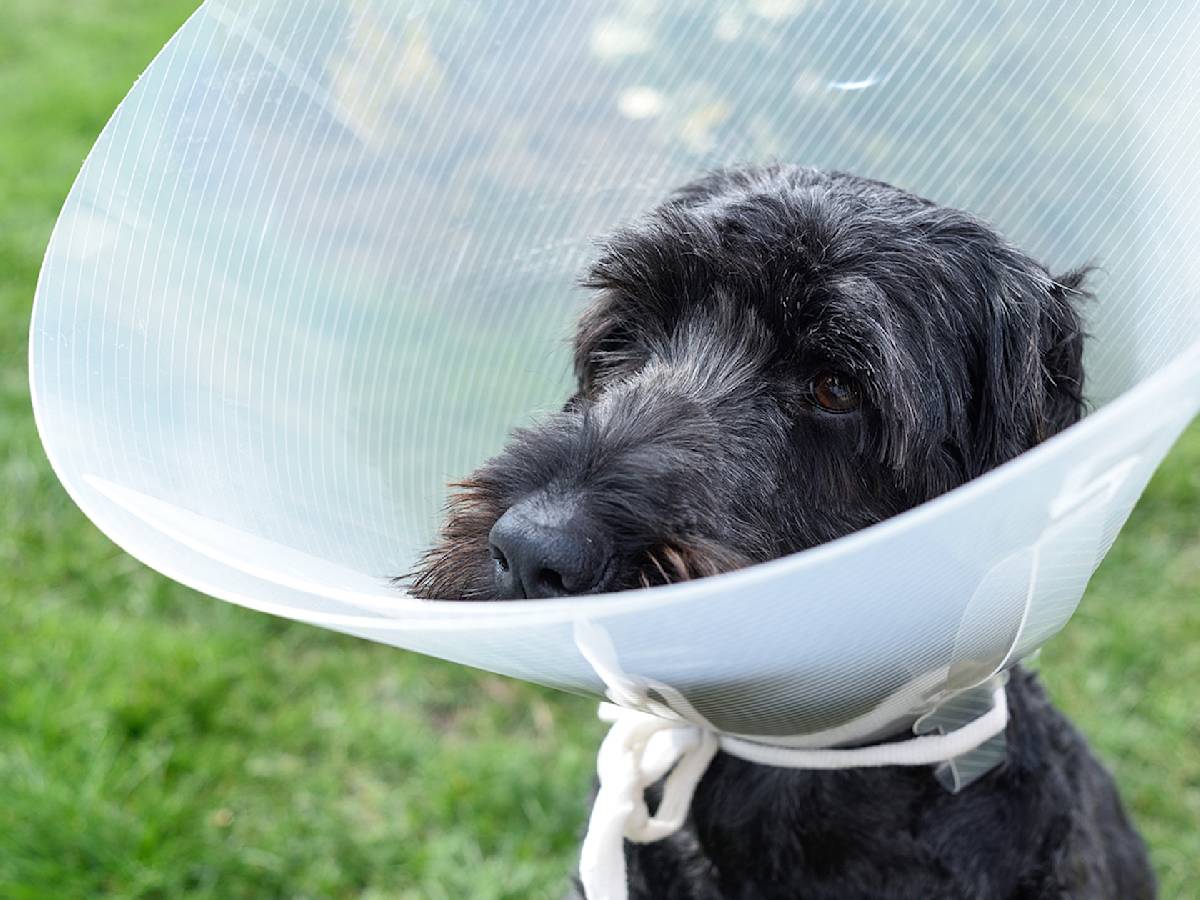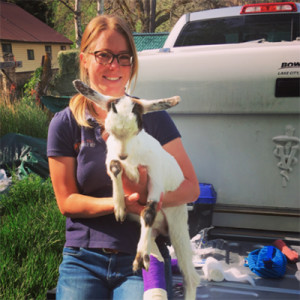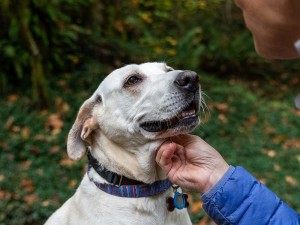Everything You Need to Know About Spaying and Neutering Your Dog
A vet’s take on why it’s a smart choice. Snip, snip!

Share Article
If you’ve arrived at this page, you are probably the proud new parent of a puppy — congrats! You are also probably overwhelmed by all the decisions you need to make: kibble or wet food, collar or harness, daycare or dog walker? You might even be confused about when (and if) you should spay or neuter your dog. It’s a big decision for a new pet parent to make. Veterinarians recommend it, but is it always the right choice?
Hopefully, we can make this one easy for you: yes, you should spay/neuter your dog. Even though dog adoption is on the up and up, overpopulation remains a huge problem and many pups born on the street meet poor fates. Spaying or neutering dogs can really turn this problem around, but beyond doing it for the greater good, there are pretty compelling health benefits. Keep reading, I’ll explain everything.
Why spay or neuter your dog?
There are plenty of proven major health and behavior benefits to spaying and neutering your pup. Neutering a male dog can prevent prostate and testicular cancers, and spaying a female dog can prevent pyometras, which are serious uterus infections, and breast cancer — yes, dogs get breast cancer too. Unspayed female dogs also go ‘into heat,’ i.e. they get their period, twice a year, when they’ll have to wear a diaper for three weeks. And unneutered male dogs are more likely to ‘mark’ or lift their legs everywhere to woo said females. Charming!
Without a doubt, the benefits of spaying or neutering your pup will help them lead a long, happy life. Here’s a breakdown of the benefits:
Drastically reduces their chance of getting breast (mammary) cancer.
Eliminates the risk of testicular cancer in male dogs.
Prevents serious womb infection, which affects older female dogs and often involves emergency surgery.
Removes the risks associated with birth-related complications.
The risk of prostate cancer is reduced in male dogs.
No periods. That means no messy clean-ups and no male dogs knocking down your door.
Reduces certain types of aggressive behavior.
Studies show neutering will decrease their desire to roam.
Dogs will live an average of up to 3 years longeropens in new tab than intact dogs.
Helps limit overpopulation by removing the potential for unplanned pups.
What are the risks of spaying or neutering?
There are many benefits to spaying and neutering your dog, but what about the risks? While complications are uncommonopens in new tab, there are some risks to be aware of. Dogs who have been spayed or neutered may be more at risk for:
Certain cancers
Cruciate ligament disease
Canine hip dysplasia
Obesity
Incontinence
The risks associated with spaying and neutering are rare, but there’s one exception: Obesity. Yep — it’s very common for altered dogs to become overweight. But, this is one condition over which you have the most control, and avoiding obesity can also help reduce the possibility of those other risks. So, be thoughtful about the type of food and the amount you feed your dog. Seriously, one of the best things you can do for your dog’s health is to be conscious about their diet.
What to expect with the surgery itself
Let’s talk surgery specifics. A neuter is the removal of a male dog’s testicles, which halts testosterone production and renders them sterilized. Most vets will remove the whole, er, package, while shelter vets or those at low-cost clinics often leave behind the scrotum. A spay removes either a female dog’s ovaries or both the ovaries and uterus, so she cannot get pregnant. If this is all starting to stress you out, don’t worry, the surgeries are done under anesthesia so your pup won’t feel a thing. Because this surgery is very safe and has low complication rates, most dogs quickly recover without any problems. In many cases, dogs brought in for morning surgery can be safely sent home the same day to be monitoredopens in new tab.
How much does spay or neuter surgery cost?
Costs can vary depending on where you live, but most clinics tier surgery costs based on your dog’s size (the bigger the dog, the more anesthetics, IV fluids, and surgical materials are needed). Neuters range from $200-500 and spays from $300-700 because they are more invasive. On that subject, some vets offer laparoscopic surgeries which are less invasive still but more expensive. If surgery is out of your budget, some pet insurance plans cover it; if not, ask your vet about CareCredit or look into local low-cost spay/neuter services, such as the ASPCA’s mobile unitsopens in new tab.
When should you spay or neuter your dog?
As if the why wasn’t controversial enough, when to spay/neuter your dog is also a hotly debated subject — even among vets. The general consensus on the best age to spay or neuter a dog is six months old, which is when female dogs are fertile and, as such, at risk of mammary cancer.
What is the most common age to spay/neuter at shelters?
If you adopted a pup from a rescue organization, they were likely spayed/neutered at three-four months old, which is standard (and safe), and meant to prevent pregnancies among puppies sheltering together. While you won’t have much of a say about when your shelter dog is altered, it’s important to remember that the benefits of spaying or neutering your dog almost always outweigh the risks. And spaying or neutering your dog doesn’t just affect your pup — it benefits dogs everywhere because it prevents overpopulation and keeps more dogs out of the shelters.
When should you spay/neuter your small-breed dog?
Size matters: It’s safer to wait until a dog is at least five pounds to go under anesthesia, so if you have a small-breed puppy, your vet will probably recommend waiting until they’re bigger. Those serious (but rare) health risks mentioned earlier are much less likely with small breed dogs, so they can be safely neutered at a younger age.
When should you neuter your large-breed male dog?
Large-breed dogs are more likely than small-breed dogs to develop issues (like joint problems) after being neutered. Studiesopens in new tab have also shown that waiting until large-breed pups (more than 65 lbs) are at least one year old to neuter them lowers the risk of bone cancer because hormones influence bone growth and, naturally, Doberman Pinschers have a lot more growing to do than their Min Pin cousins.
When should you spay your female dog?
Interestingly, unlike with male dogs, age and breed aren’t the driving factors. For female dogs, each time they go into heat, their risk for major health concerns (like womb infection) increases.
Ultimately, the decision about when to spay or neuter your pup should be one you have with your veterinarian. They can share their expertise while considering your dog’s specific risk factors and help you make an informed decision.

Oneal Bogan, DVM
Oneal Bogan, DVM, is a mixed animal veterinarian from Colorado. Dr. Bogan loves the variety of animals she gets to work with. She owns her own mobile practice which provides at-home care to large and small animals. Dr. Bogan also works at a local small animal clinic. In her free time, Dr. Bogan loves to hike, ride horses, and read. She also loves writing and hopes her advice helps all pets live a happy, healthy life.
Related articles
![woman with new puppy]()
9 Unexpected To-Dos for New Pet Parents
Sound advice from seasoned dog and cat parents who have been there.
![French bulldog puppy looking scared at vet]()
10 Things to Ask at Your First Vet Visit
There are no stupid questions — well, when it comes to your dog’s health.
![A woman hugging her dog.]()
Want Your Dog to Live Longer?
Seriously, though. The Dog Aging Project is looking for participants.
![Closeup of white lab mix dog being pet under the chin by pet parent]()
Can Dogs Get Breast Cancer?
Sadly, yes — one in four dogs will develop mammary tumors — but there's an easy way to prevent them.





